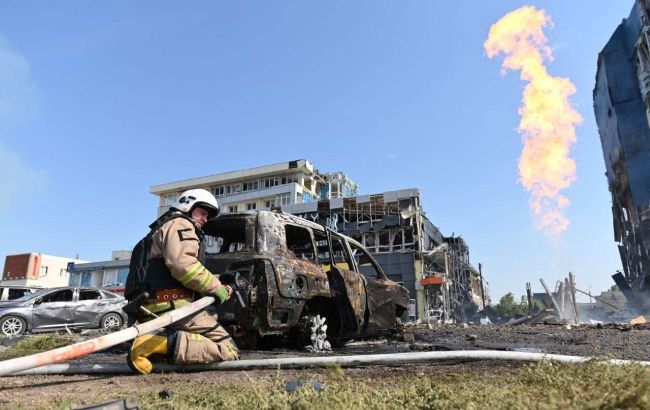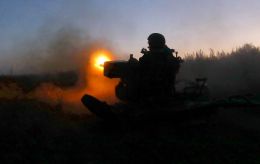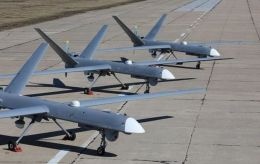Kharkiv under attack again: Does Ukraine have capability to close sky over city
 Photo: aftermath of the strike on Kharkiv on September 1 (t.me/synegubov)
Photo: aftermath of the strike on Kharkiv on September 1 (t.me/synegubov)
Due to its proximity to the Russian border, Kharkiv is constantly under attack, but by the end of August, the enemy transitioned to daily strikes. In addition to drones, ballistic missiles, and usual guided aerial bombs (KABs), there has been a return to using S-300 missiles against ground targets.
For more details on this and whether it is currently possible to close the sky over Kharkiv, see the RBC-Ukraine material.
Contents
- Bombs, ballistic missiles, and S-300: How Russia is increasingly striking Kharkiv
- What is the purpose of the constant shelling of Kharkiv
- Is it possible to close the sky over Kharkiv
Bombs, ballistic missiles, and S-300: How Russia is increasingly striking Kharkiv
On August 30, Russia launched a massive aerial bombing attack on civilian infrastructure. As a result, six people were killed and nearly a hundred were injured.
The FAB-500 bombings hit five locations in the Industrialnyi, Slobidskyi districts, and the central part of the city. There was a direct hit on a 12-story building in the KhTZ area, with damage to 82 apartment buildings, private houses, warehouses, educational and commercial establishments, as well as garages and premises of a company.

Photo: aftermath of the strike on the apartment building on August 30 (t.me/synegubov)
The strikes continued on the evening of August 31, with reports of a missile attack that injured four people and damaged a civilian enterprise and over 25 vehicles.
It was later revealed that for the first time during the war, Russia used the Grom-E1 weapon against Kharkiv—a hybrid of a missile and an aerial bomb. According to open sources, it is based on the Soviet Kh-38 missile and has a maximum range of 120 km.
For more details on the Grom-E1 characteristics, follow the link. It is noted that this hybrid is 1.8 times more effective than the OFAB-250-270 free-fall aerial bomb. It is launched from Su-35, MiG-35, Su-25SM3 fighter jets, as well as Ka-52 helicopters and others. Previously, such hybrids were recorded in strikes on Myrnograd (the Donetsk region) and Kherson.
On September 1, another massive strike occurred. The enemy attacked with Iskander and S-300 missiles on a shopping center, a Nova Poshta branch, a gas pipeline, and the Sports Palace. Some impacts near the sports complex hit the ground. A total of 50 people were injured.
According to Dmytro Chubenko, spokesperson for the Kharkiv Regional Prosecutor's Office, there were six impacts within a 300-meter radius around the Sports Palace. For more details on the aftermath, see his comments for the RBC-Ukraine YouTube channel.
Explosions continued on the evening of September 1 and into the night. Two Shahed drones hit a private house in the Kyivskyi district and near an educational institution in the Slobidskyi district. In the Industrial district, a strike from an unspecified rocket caused fires at summer houses. Later that day, Russian forces struck a garage cooperative near residential areas in the Kyivskyi district. Currently, seven people are reported injured.
What is the purpose of the constant shelling of Kharkiv
While today's massive attack on Kyiv may have targeted the government district and "decision-making centers," the systematic strikes on Kharkiv are seen solely as terrorizing the civilian population, according to Oleksandr Musiienko, head of the Center for Military-Legal Studies.
For more details on the massive attack on the Ukrainian capital, read RBC-Ukraine's material Why Russia keeps bombing Kyiv and how long it could last: Experts.
Musiienko notes that Russia is again attacking Kharkiv with inaccurate S-300 systems, something it had almost ceased doing during the summer months.
"These are overtly terrorist attacks, aimed at demoralizing the local population and trying to break us. They (the Russians-ed.) are failing to advance in the northern Kharkiv region, and they are failing to stop Ukrainian actions in the Kursk region. There is no other purpose today except terrorism," the expert says.

Photo: Consequences of the strike on Kharkiv on September 1 (t.me/synegubov)
According to him, the constant bombings and now the return to using S-300 systems confirm President Volodymyr Zelenskyy’s statements that Western partners need to lift restrictions on the use of long-range missiles to target enemy airfields and launch systems.
Military expert and former spokesperson for the General Staff of the Armed Forces of Ukraine, Vladyslav Seleznov, notes that the Russian army is terrorizing Kharkiv to cause panic and a mass exodus of residents. He says that if people from the million-strong city are forced to evacuate deeper into Ukraine, the burden on social infrastructure and issues with accommodating Kharkiv residents could lead to a collapse.
"I think the enemy is trying to turn Kharkiv and its suburbs into some sort of sanitary or grey zone. And they will continue to do so through missile attacks," he said in a conversation with RBC-Ukraine.
Seleznov believes that the Russian forces did not advance from the Belgorod region towards Liptsi on May 10 without reason
"They tried to reach distances that would allow them to target the northern outskirts of Kharkiv with artillery systems. When that failed, they had to use the aviation component for launching aerial bombs and missiles. The enemy does not give up hope of advancing up to 20 km into Kharkiv to try and destroy our resilient city with artillery systems," he added.
Is it possible to close the sky over Kharkiv
Experts interviewed by RBC-Ukraine agree: right now, it is not possible to close the sky over Kharkiv to ensure reliable protection for the city and its residents.
According to Musiienko, Ukraine is doing everything it can. "What our units can shoot down, they try to shoot down. But to close Kharkiv from enemy strikes, more air defense systems are needed. We are waiting for additional Patriots from Romania and elsewhere. I think they will help, including strengthening the defense of Kharkiv and Sumy, which suffer the most from Russian attacks," the expert emphasized.
It was reported today that the Romanian coalition government has approved the transfer of Patriot systems. However, the relevant bill still needs to go through parliament. Meanwhile, official Bucharest has not disclosed the potential delivery date to Ukraine.
Currently, there are not enough resources to implement missions to protect Kharkiv from aerial attacks, notes Vladyslav Seleznov.
"Bringing air defense systems closer to the city would certainly expose them to attacks from enemy Iskanders. The enemy actively uses reconnaissance drones, and any Patriot-type installation would be destroyed within a short period of time," says the expert.
A positive outcome may only come from a combined approach. This involves destroying enemy aircraft carrying aerial bombs at Russian airfields (for which partner permission for long-range missile strikes is needed), as well as strengthening air defense at operational-tactical and strategic levels.
"To show the Russians that any attempt to enter our airspace with aviation will definitely end with destruction by our air defense system. Additionally, we need electronic warfare means and EW detectors to detect reconnaissance drones. Such equipment exists, but we critically lack it," he emphasizes.
Regarding the case of the hybrid missile and bomb strike Grom-E1, the enemy often uses such munitions, adapting to the conditions of warfare in an attempt to attack from greater distances. "They use these options to strike at our Kharkiv with relatively inexpensive weapons that cover serious distances. It is important for the enemy and they will continue to work on this," added Seleznov.
Sources: information from the Kharkiv City Council, Kharkiv Regional Military Administration, comments from Oleksandr Musiienko, head of the Center for Military-Legal Studies, and Vladyslav Seleznov, former spokesperson for the General Staff of the Armed Forces of Ukraine.

